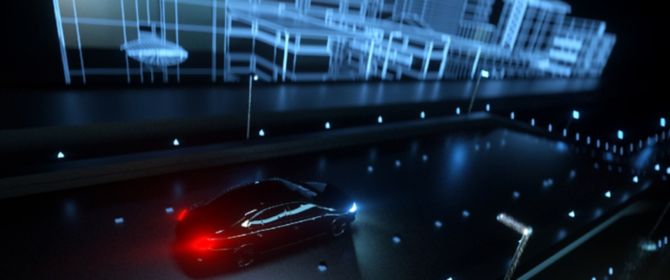Related services
In a fast, competitive and ever-changing technological landscape, the expectations of customers are increasing all the time. ‘Digital’, ‘Innovation’, ‘Acceleration’, ‘Disruption’ – topics that crop up everywhere in current business practice and are becoming ever more prominent. Due to the steadily increasing interpenetration of technology in business processes in the front, mid and back office, it is no longer possible to concentrate information technology within a single department – the impact of the digital transformation is noticeable and tangible throughout the organisation. How can market leaders in this fast, dynamic and competitive world deliver distinctive solutions that seamlessly integrate into business processes and connect with one another, are safe and moreover work effectively and efficiently?
Striking a balance between fast delivery and technology you can trust
The Modern Delivery framework developed by KPMG recognises the necessity for businesses to respond to the ever-changing market and enables them to deliver high quality software and other solutions quickly and reliably – whether the requirement is customer-focused design, reliable architecture or compliance with regulations.
This is the next generation of how technology will be developed and deployed across the organization, not just within the IT department.
In order to be able to hold their own in a world of ‘Digital’, ‘Innovation’, ‘Acceleration’ and ‘Disruption’, a modern approach is needed. So KPMG supports companies in establishing the conditions for Modern Delivery: a holistic approach to product management and software development – based on Agile, DevOps and Lean principles – in order to create integrated solutions. These solutions not only support our customers’ technology and processes but tie in with users’ wishes and comply with the requirements of the organisation with regard to modern technological solutions.
Multidisciplinary teams are essential to Modern Delivery
Treating technology as purely the domain of developers and management teams is too short-sighted and underplays the role of technology within businesses today. In order to be able to truly benefit from Modern Delivery, the entire organisation needs to be dedicated – from the boardroom to the people on the shop floor. Multidisciplinary development teams must be empowered to focus on what they are good at – effectively and efficiently delivering and continually supplying quality products and innovations that match users’ wishes, with technology at their heart.
Holistic approach required for Modern Delivery
The eight chief dimensions of the Modern Delivery framework are listed below. These dimensions ensure a holistic and comprehensive solution that keeps all aspects of an organisation in view.
1. DevOps & CI/CD
Companies that embrace a DevOps culture maintain a perspective on the entire value chain in order to be able to deliver value to customers on an ongoing basis. Among other things, DevOps consists of applying different modern software engineering principles and processes throughout the software delivery value chain; from idea to value realisation and from development to management. Thanks to DevOps, roles that were previously contained in silos, such as development, quality assurance, risk & compliance and security, can be coordinated and used to make better, more reliable products. The use of automation, including automated software development factories and ‘pipelines’, enables more frequent delivery and added value for the customer at an earlier stage.
2. Agile working methods and patterns
Being truly Agile, i.e. not just in name, is the key to delivering working, high-quality software tailored to user requirements quickly and efficiently. This applies to all aspects of your business – whether that means managing products, from idea to value realisation, linking strategic themes with objectives and core results, or even financing and managing value flows. Scaling up Agile working methods requires specific knowledge and experience about the use of, and choices between, leading scaling and other frameworks in order to enable optimum output at Enterprise, Portfolio, ‘Team or Teams’ and Team level.
3. Modern IT architecture
An integrated and contemporary architecture approach built on cloud, microservices and containerisation helps companies streamline development and delivery by making use of state-of-the-art market standards. Modern architectures allow businesses to respond to changes in the market effectively and efficiently.
4. Employee transition
The strongest card of any organisation are its people and a conscious and controlled transition on the part of your employees is crucial to the success of the transformation to Modern Delivery. This can range from the use of Capability frameworks to enable talented individuals to manage their personal development growth and career diversity to creating the right environment, making available time and effectively deploying tools for collaboration and exchanging knowledge and information and innovation in order to get the most out of your people.
5. IT Service Management
Modern Delivery promotes shared responsibility for development and management in product teams, where traditionally these activities were clearly separated in terms of responsibilities. Multidisciplinary DevOps teams assume complete ownership of solutions, enabling efficient development and efficient management and maintenance. Modern IT Service Management (ITSM) processes enable the transition of the organisation to Modern Delivery by integrating modern full-stack monitoring, tracing and logging into teams’ working methods.
6. Intelligent IT management (Operations)
The necessity for businesses to be able to effectively adapt to changes is indisputable. In order to remain relevant in today’s market, with the current speed and scale of the changes going on there, it is essential to make smarter use of data. Switch from ad hoc reporting to proactive incident management by supplying information to operational activities, including eventing, monitoring, alarming and the design of a resilient architecture for technological solutions with high availability. Through the introduction of feedback loops in management processes, users are involved in jointly delivering value.
7. IT Security & Risk Control
The transition from treating Security, Risk and Compliance as a silo function to a coordinated and integrated approach means applying the ‘shift left’ principle to joint responsibility for risk and security across the entire organisation. An integrated DevSecOps approach – including modern control design, continuous monitoring and approaches such as ‘controls as code’ – enables Security & Risk departments to switch from a controlling (audit) approach to becoming an advisory authority focused on sharing knowledge and expertise.
8. IT Operating Model
Establishing a modern IT Operating Model enabling the transformation of the business to a customer focused and product driven organisation is essential in the current market, in which the traditional sharp dividing lines between business and IT strategy are blurring and everything is viewed in relation to everything else, from organisation and management, capacities, services and processes, people and skills to performance management and sourcing design.
Modern Delivery in your organisation
We will be pleased to help your business adapt appropriately to a world dominated by ‘Digital’, ‘Innovation’, ‘Acceleration’ and ‘Disruption’. View our services for a more detailed explanation of the way in which the primary dimensions of Modern Delivery can be implemented within your organisation.


